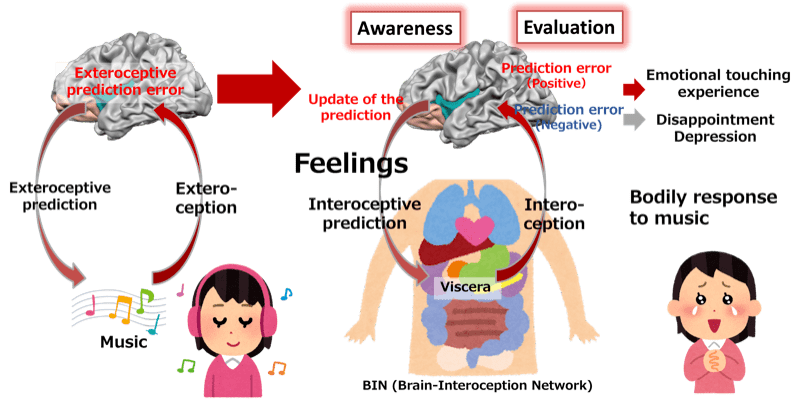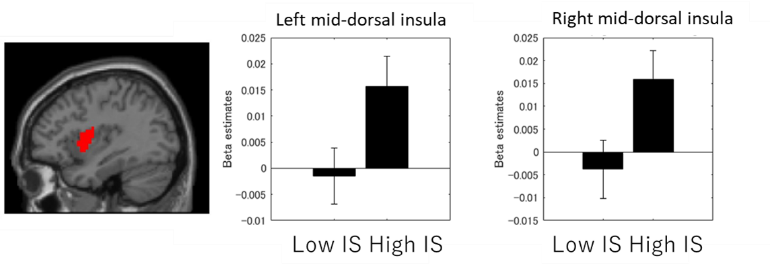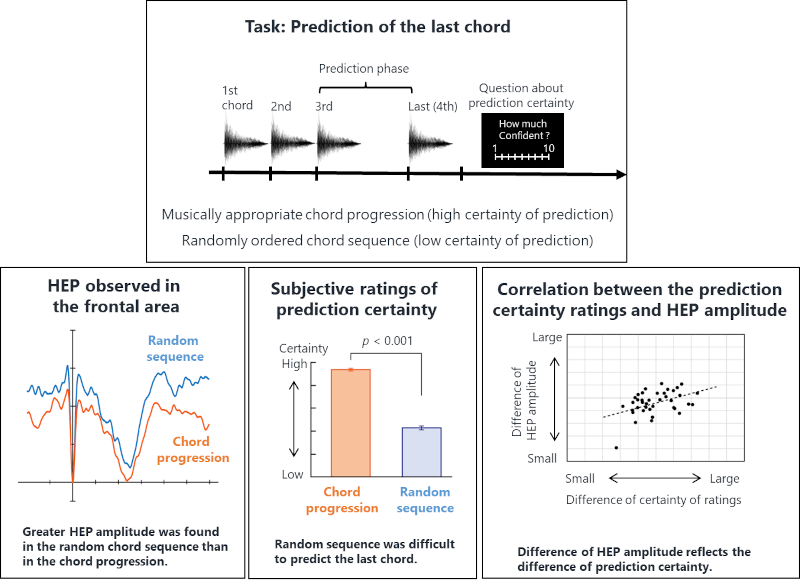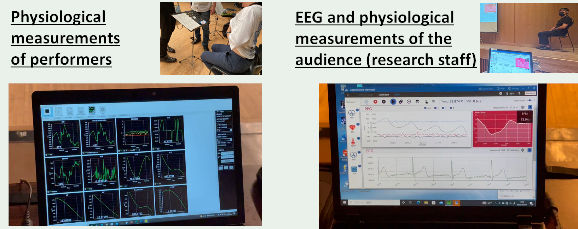Progress Report
Innovation in “Mental Capital” through Awareness Music and creation of new liberal arts6. Investigation to elucidate the KANSEI mechanism and to develop its brain scientific model based on the analyses of simultaneous fMRI-EEG-BIN measurement data
Progress until FY2022
1. Outline of the project
In this theme, we hypothesize that the brain-interoception network (BIN) is involved in interoceptive awareness that triggers KANSEI evaluation. We aim to verify the hypothesis and elucidate the mechanism by analyzing brain and physiological data from fMRI-EEG and multimodal physiological measurements (Fig. 1).

2. Outcome so far
We published a paper on the insula-centered interoceptive information processing hypothesis, which is the theoretical basis of this theme (Fermin, Friston, & Yamawaki, 2022).
Participants’ heart rate and brain activity were measured during an emotional rating task to musical stimuli. Dividing participants into high and low interoceptive sensitivity (IS) groups based on their performance in a heartbeat discrimination task, we found an increase in heart rate in the high IS group when valence level was high and the mid insula activity correlated with valence level (Fig. 2; Maekawa et al., submitted). The mid insula is known to receive afferent signals from visceral organs and transmit to the anterior insula, suggesting that interoceptive information is used more in the high IS group for valence rating.

The effect of uncertainty in predicting musical chords on interoception was examined using heartbeat evoked potential (HEP). The results showed that the HEPs observed in the frontal EEG channels while predicting the next chord were larger for chord sequences with high uncertainty than for chord sequences with low uncertainty (Fig. 3; Ono et al., submitted), suggesting that uncertainty in prediction influences interoceptive processing.
To demonstrate the basic findings in the field, we are measuring the heart rate of music performers using a wearable device and acquired data on subjective KANSEI evaluation using an application running on a smartphone at a workshop and extracted issues in field measurement (Fig. 4).


3. Future plans
We will continue to elucidate BIN and identify indices to visualize interoceptive awareness. In addition, we will verify whether the obtained indices are related to the emotions related to music, and conduct field experiments to establish a theoretical and technological foundation for Awareness Music/Sound.
(SASAOKA Takafumi, Hiroshima University)